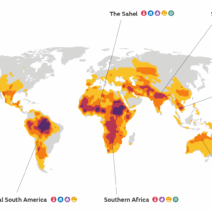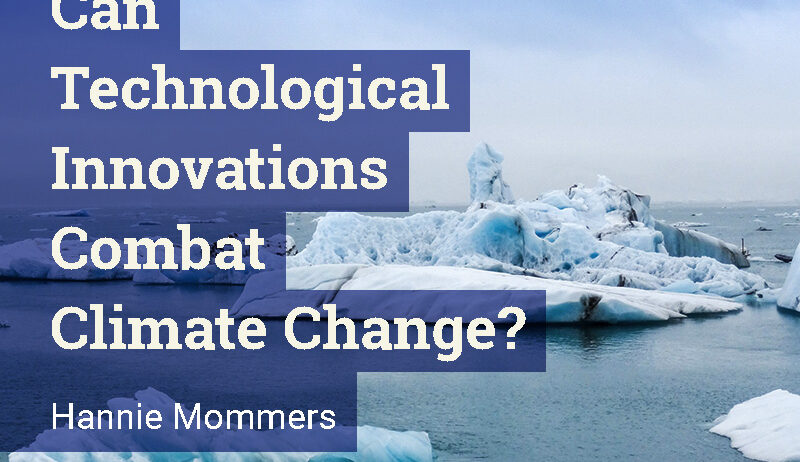As our planet grapples with the multifaceted crisis of climate change, the pressing question arises: what can we do to reverse its wrath? Climate change, driven primarily by human activities, demands urgent and innovative solutions. Fortunately, hope is not lost. A myriad of technological advancements offers promising pathways toward climate stabilization. Two categories of technology stand out in this endeavor: renewable energy technologies and carbon capture and storage systems. These innovations not only combat climate change but also foster a sustainable future.
Renewable energy technologies encompass a broad spectrum of energy sources that are naturally replenished. Solar, wind, hydroelectric, and geothermal energy are at the forefront of this revolution. Unlike fossil fuels, which emit copious amounts of greenhouse gases, renewables provide cleaner alternatives that significantly reduce our carbon footprint.
To elaborate, let’s delve into solar energy. Solar panels have become increasingly efficient, with modern photovoltaic cells converting sunlight into electricity with remarkable efficacy. As installation costs decline, households and businesses alike are harnessing the sun’s power. This shift not only mitigates carbon emissions but also provides economic benefits through reduced utility bills. Have you ever considered how many solar panels it would take to power your home? An intriguing challenge arises: invent an innovative way to maximize solar energy use in urban environments where space is a premium.
Wind energy, another key player in renewable technology, generates electricity by harnessing the kinetic energy of atmospheric movement. Wind farms, whether onshore or offshore, capture wind currents and convert them into electrical energy. Innovations in turbine design, including larger blades and improved efficiency, enable wind energy to contribute more substantially to national grids. The challenge lies in refining wind energy technologies to ensure they coexist with biodiversity, preserving natural habitats while harnessing wind as a resource.
Transitioning to hydroelectric power, this technology utilizes the flow of water to generate electricity. Large dams and small-scale hydro installations alike play a vital role in providing clean energy. However, the balance between energy production and ecological preservation is paramount. How can we optimize hydroelectric systems to keep their environmental impact to a minimum? The push toward run-of-the-river projects exemplifies an innovative approach that maintains ecological integrity while emphasizing renewable energy production.
Now, while renewable energy technologies pivot societies away from carbon-heavy systems, carbon capture and storage (CCS) technologies offer an intriguing counterbalance. CCS aims to capture carbon dioxide emissions produced by industrial processes and store them underground to prevent their release into the atmosphere. This technology is pivotal in industries that are challenging to decarbonize, such as cement and steel production.
One of the most promising advancements in this field includes direct air capture (DAC) technology. DAC systems use chemical processes to extract CO2 directly from the ambient air. Imagine a world where giant machines quietly eliminate greenhouse gases from our atmosphere. While intriguing, this technology is still in its infancy. Scaling DAC operations to a level that genuinely affects atmospheric CO2 concentrations presents a significant challenge. How do we incentivize investments in such ambitious projects while ensuring they integrate with existing carbon emissions reductions efforts?
In addition to direct air capture, bioenergy with carbon capture and storage (BECCS) represents another fascinating intersection of technology and ecology. This strategy involves growing biomass, which absorbs CO2, converting it to energy, and capturing the carbon emissions produced in the process. The cyclic nature of BECCS could contribute significantly to achieving negative emissions. However, it begs the question: can we sustainably produce enough biomass without compromising food security or biodiversity? This challenge is vital for ensuring that BECCS becomes a trusted ally rather than a deceptive alternative.
Moving forward, the synergy between renewable energies and carbon capture technologies holds immense potential. As nations strive to meet ambitious climate targets, these innovations can work in concert to create a resilient energy landscape. Policymakers, innovators, and environmentalists must collaborate to foster an ecosystem where such technologies flourish, and their benefits are democratically shared.
As we examine the landscape of technological innovations aimed at combating climate change, the imperative for interdisciplinary cooperation is glaringly evident. Financial investment, regulatory support, and public awareness are critical in propelling these technologies from prototype stages to widespread adoption. Local governments can incentivize the shift toward renewable sources through tax advantages, while educational institutions can drive research and development efforts that lead to groundbreaking discoveries.
Ultimately, human ingenuity can stem the tide of climate change, but it demands collective action and engagement. The age of technology presents us with extraordinary tools and methods to heal our planet, provided we wield them responsibly and sustainably. Only through persistent questioning and tackling the challenges that accompany these technologies, can we pave the way toward a thriving, sustainable future. With the right blend of innovation, dedication, and collaboration, humanity can indeed rewrite the narrative of climate change, transitioning from a story of devastation to one of hope and renewal.







